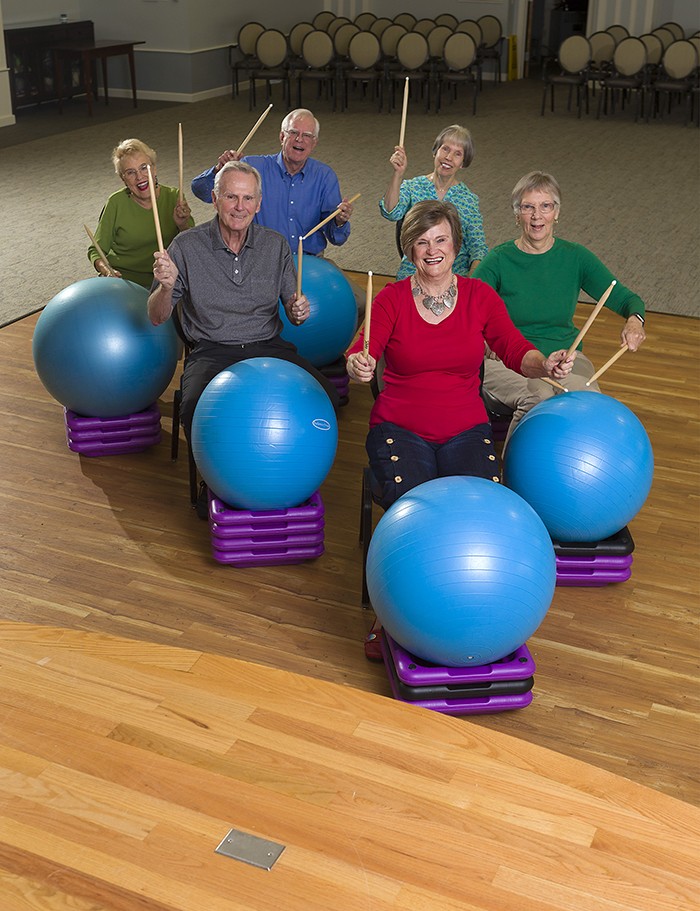When gyms closed last year, and people couldn’t gather in groups, a big incentive to exercise was closed off too. With many exercise classes canceled and the real risk of catching the coronavirus, lots of seniors were staying home.
But that more sedentary lifestyle created other problems. In trying to keep residents safe, the lack of activity was making residents less healthy, says Chris Grabowski, Senior Forever Fit manager at Singh Senior Living, which owns Waltonwood Cary Parkway.
“We found when the residents were having to be isolated for various reasons, that their functional ability, their strength and coordination, and things that really impact their activities of daily life, were fading pretty quickly,” he said.
He and other wellness managers at senior living facilities had to change their approach and find innovative ways to keep residents active. The goal wasn’t to help folks lose weight or run a marathon, but to help seniors remain independent and happy.
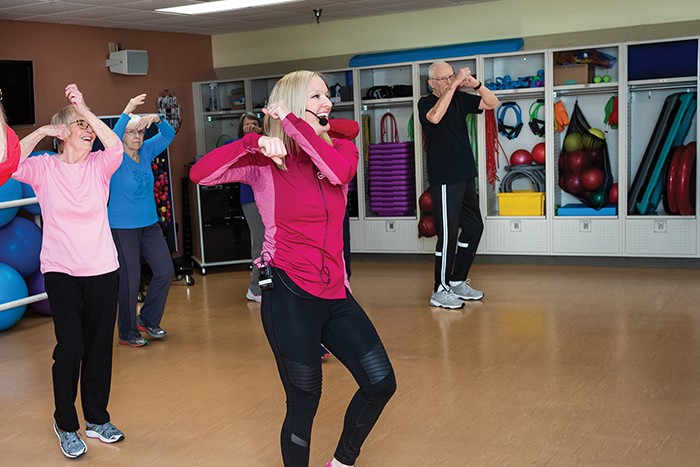
Ally Setliff, wellness coordinator at Glenaire, teaches a low-impact aerobics class at the retirement facility, before COVID. Aerobic activity can improve endurance and mood, say experts.
Waltonwood residents received paper cheat-sheets of exercises they could do on their own. Staff recorded video routines that residents could watch on their iPads or DVD players. They also started holding small, socially distant exercise classes.
At Glenaire, some fitness classes were held over Zoom, and other activities moved outside.
“We created a campus-wide greenway map. Everybody got a map of how far it was to walk to the Food Lion and how far it was to walk a loop around the cottages. Or, how many laps do you have to do, back and forth down a long hallway, to get in your daily steps,” said Carolyn Rice, wellness director at the Cary retirement community.
Exercise in general slows down the aging process and keeps your mind sharp and your mood heightened, she says. Walking is especially beneficial, but she also stresses that activities focusing on balance and range of motion are crucial.
“As you get older, you get some joints that get stiffer. Keeping up the range of motion and balance can help with the slips and the falls — and maybe just overall chronic pain that people might have,” Rice said.
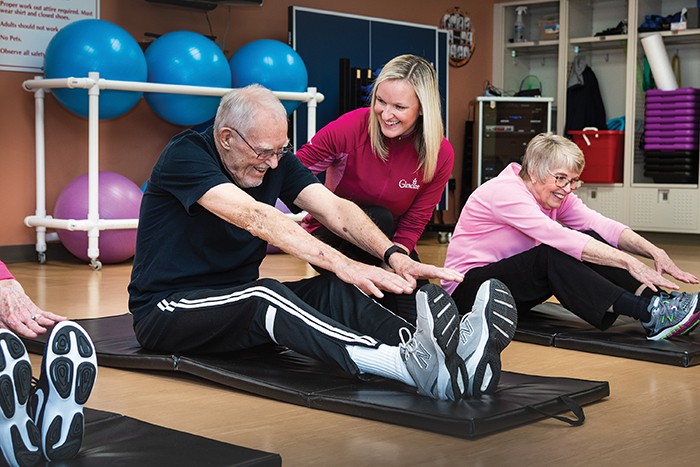
Daily stretching is vital to preventing pain, and many stretches can be done in a chair or with bent knees.
Without good balance, we are more likely to fall, and simple moves like walking and getting out of chairs become more difficult, agrees Britney Ramos, fitness coordinator at Waltonwood Cary Parkway.
“If you don’t have balance and core stability, you can’t get much else done,” she said.
Exercises to develop balance, like standing on one leg at a time, are vital, Ramos says. It becomes harder to maintain our balance as we get older, and this loss happens sooner than you might think. Depending on how active you are and how strong your core muscles are, balance can ebb starting as young as 40.
In addition to balance work, Ramos recommends walking, stretching regularly, and a daily routine of strength exercises like squats and calf raises. Many of these moves can be done at home, without any fancy equipment.
“For those people who have really embraced that whole Zoom and exercise, you’ll see them with their cans — they don’t necessarily have to have weights. I think some people are less embarrassed, because they can turn the camera away,” Rice said.
“I think it gives some people a little boost of confidence. Plus, some people just don’t want to exercise in front of other people.”
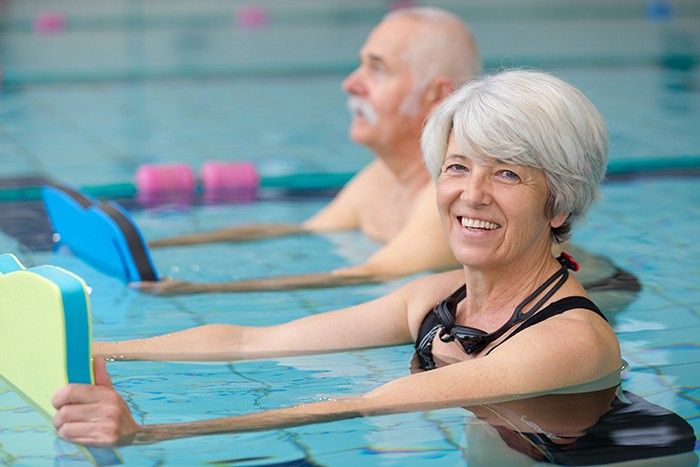
Water aerobics is a favorite activity with seniors, says Susan Pettengill, vice president of healthy living at the Triangle YMCA. It is low impact and the water provides a buoyancy that supports stiff joints.
But for those folks who can’t wait to get back to their weekly exercise classes, Susan Pettengill, vice president of healthy living at YMCA of the Triangle, says staff there are expanding in-person offerings, with classes indoors, outdoors and at the pools.
“Water aerobics is a favorite with active older adults, because it is low impact and easy on the joints,” Pettengill said. “We also recommended adding some weight-bearing, balance, and flexibility exercises to help maintain bone health and muscle mass.”
Even though things are opening and gyms are scheduling classes again, these activities should complement a daily fitness regimen. A walk, some squats, and a few balance moves done every day will benefit anyone who wishes to have a long, active and independent life.
“Physical activity can help prevent serious physical and emotional problems, such as depression, chronic conditions, falls and memory decline,” said Pettengill. “Staying active can help you enjoy your active adult years more fully.”
Do These Moves Every Day
Sit to Stand
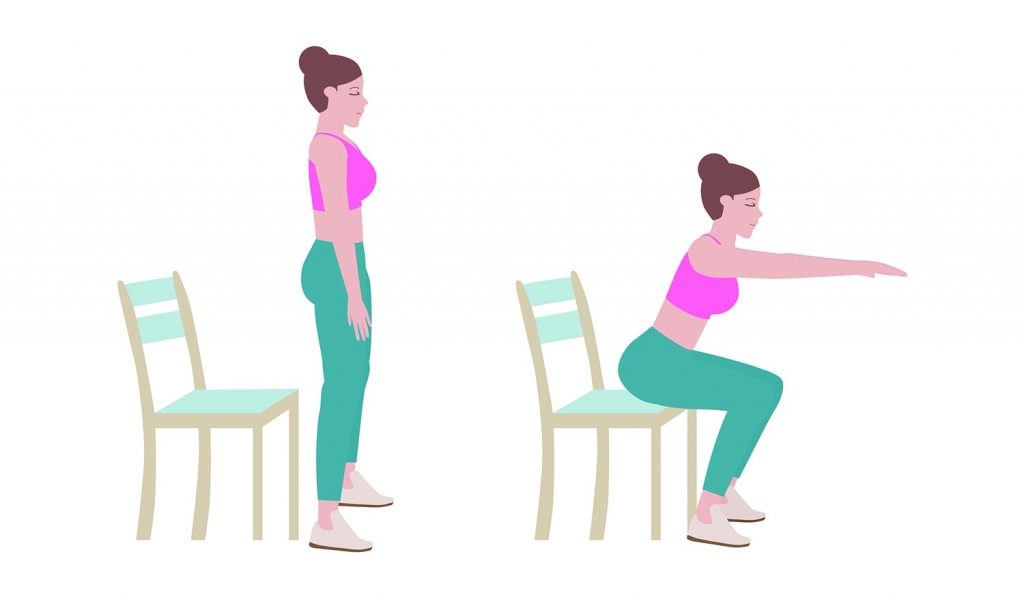
Stand in front of a chair with your feet about hip-distance apart. With your arms held straight out in front of you, tighten your stomach muscles, and slowly bend your knees to lower yourself into the chair. Pause, then press back up using your leg and core muscles, not your hands. Try not to swing your torso, either. Work up to doing this 10 times in a row, two or three times a day.
Mini Squats
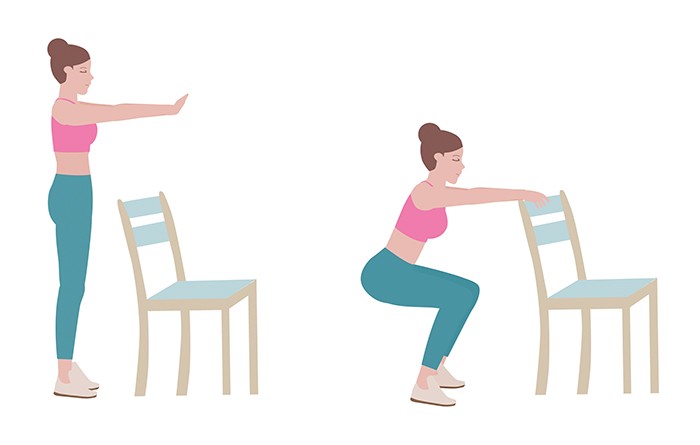
Standing with your feet shoulder or hip-distance apart, hold onto the back of a sturdy chair. Tighten your core muscles and slowly bend your knees, as if you are sitting in a chair, and then slowly push back up. Each time, lower your body as far as you can comfortably go while keeping your chest up and heels on the floor. Work up to doing this 10 times in a row, several times a day.
Single-leg stand
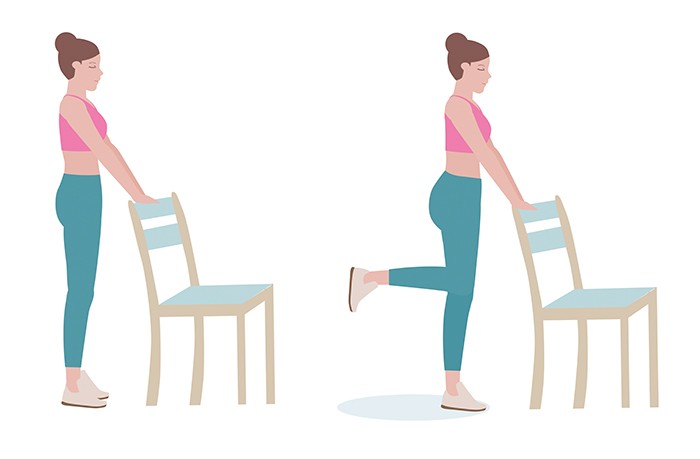
With your hands on hips, lift one leg and bend it back at the knee. Hold for 30 seconds. Repeat on the other side. For stability, hold onto a counter or chair. As balance improves, increase the number of repetitions.
Tandem Stance
Place one foot in front of the other, as if you are walking on a tightrope. Hold the position for 30-45 seconds, keeping your head up, tummy tight and shoulders back. If you need extra stability, hold onto a counter or sturdy chair. Repeat with the other foot in front.
Calf raises
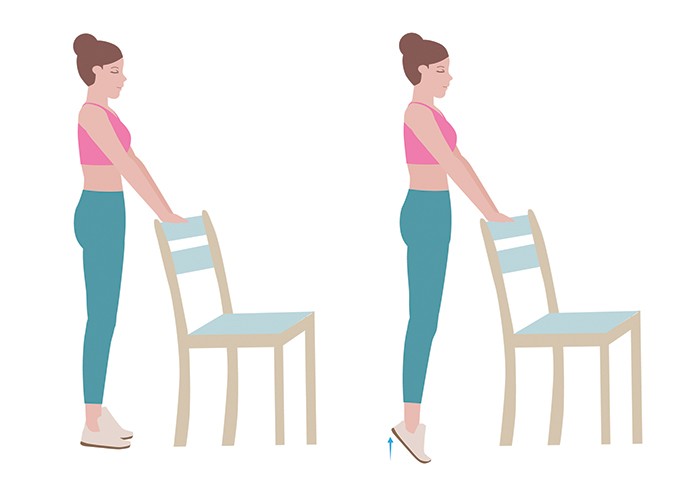
Standing with your feet hip-width apart, let your arms relax at your sides and draw your shoulders back and down. Keeping your core tight, push into the floor with your toes and lift your heels as high as possible. Balance and hold for 30 seconds. Lower and repeat 10 times. This can also be done holding onto a chair or counter.
Seated Cat-Cow Stretch
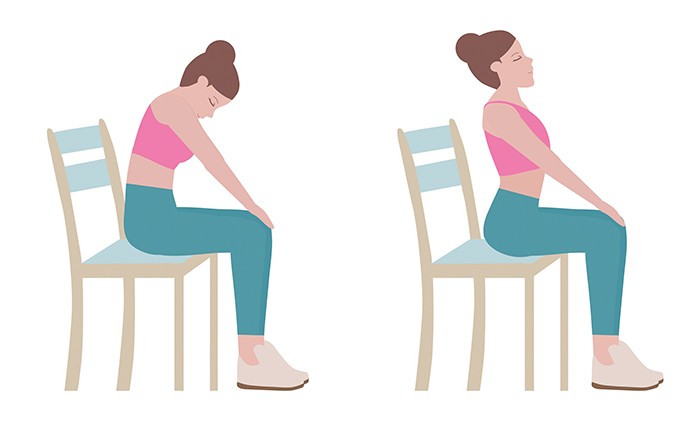
Sit at the edge of a sturdy chair, with your feet hip-distance apart and your hands on your knees.
Inhale and lift your chin and chest, drawing your shoulders down and back, and looking slightly up. Exhale and round your spine, tucking your chin and looking slightly down. Repeat 5-6 times.
Walk
Walk as much as possible, taking stairs instead of the elevator, and aim for at least 150 minutes of moderate-intensity aerobic activity each week — 30 minutes a day, five days a week.
Source: Silversneakers.com, Britney Ramos, Susan Pettengill
- Cary Celebrates 150 Years
- Nonprofit Spotlight: The Flower Shuttle
- Pregnancy is Better, Together
- Walk, Squat, Stand
- Dad Influencer Curtis Webster Jr.
- The Art of Perseverance
- Small Business Spotlight: A to Z Pharmacy
- Garden Adventurer: The Other Peppers
- Liquid Assets: Truth Serum Pale Ale from Tobacco Road Brewing
- Liquid Assets: The NC-21 (No Children Under 21), from The Provincial
- Restaurant Profile: Daybreak



